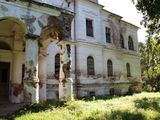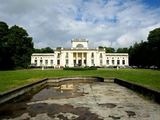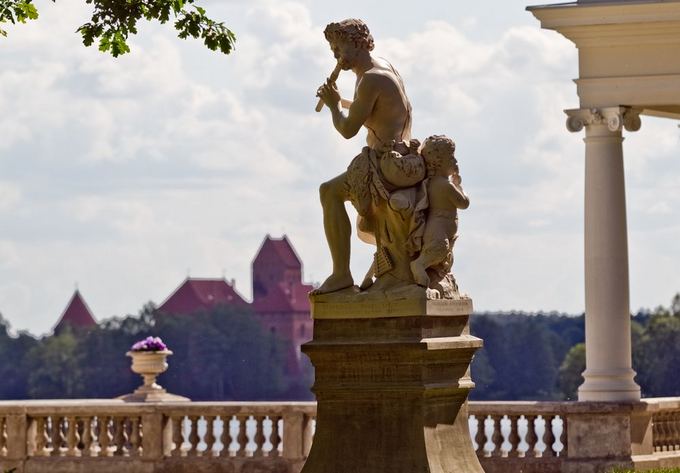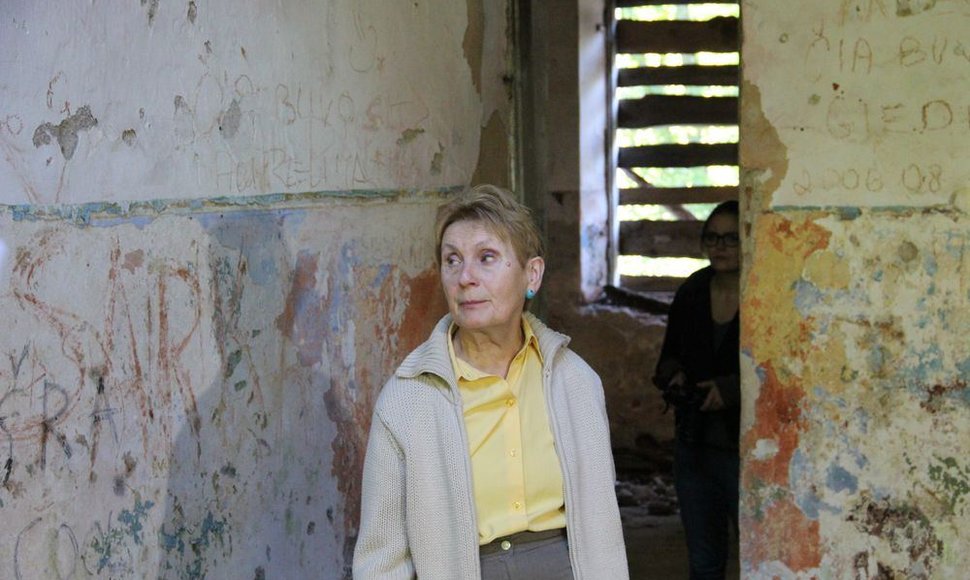According to her, ghost-like manors of Kalnaberžė and Sirutiškis, owned by the business empire of entrepreneur and leader of the Labour Party Viktor Uspaskich, are but instances of a wide-spread phenomenon. Many of Lithuania's historical manors are crumbling from neglect – like Lentvaris Manor bought by entrepreneur Laimutis Pinkevičius or Bartkuškis Manor owned by wife of another controversial businessman Juozas Petraitis.
- Part of Lithuania's historic manors are owned by municipal or state institutions. Are these in a better shape than buildings bought by businesspeople? - 15min asked Drėmaitė.
 |
| Audrės Domeikaitės/15min.lt nuotr./Sirutiškis Manor |
- Unfortunately, some municipalities are not better managers than private owners. For instance, look at the state of Jašiūnai Manor owned by Šalčininkai municipality! Formerly an arts centre, a place visited by Adam Mickiewicz, the Balinskis, the Sniadeckis – and now completely plundered. Beautiful furnaces and mantels that once adorned the place have been dismantled and sold off, all metalwork has been stolen. The Culture Heritage Department tried to impose several fines but it didn't help.
 |
| Audrės Domeikaitės/15min.lt nuotr./ Kalnaberžė Manor |
And Marvelė Manor in Kaunas district, for instance, has great historical significance for us, but you wouldn't be able to find even the foundation stones now. At one point, Kaunas municipality did not care much and private businessmen needed red bricks – and so brick by brick, the entire palace was taken apart. A pile of debris and pieces of bricks – it is all that remains. These are instances of public neglect, there are many municipalities like that.
- You have once said that Lithuania's historic manors are in this situation because of rushed and reckless privatization whereby estates were given away to whoever cared to take them.
- Exactly. An estate would usually consist of a manor house, servant quarters, icehouses, conservatories, cowsheds, stables, warehouses, cottar houses, mills, parks, ponds, distilleries, etc. They were all part of a good estate. For instance, Raguvėlė estate, residence of the famous Komar family, has 27 roofs.
Under the Soviets, manor houses usually housed kolkhoz administration, other buildings were used as warehouses to keep tractors and other equipment. After the Independence, when kolkhoz farms were split up, manors were divided up and distributed to former kolkhoz workers. Our first government decreed that manors be divided into 3-hectare estates – back then, no one thought we could ever rebuild them.
Several families would live in cottar houses of bigger estates. We have visited many of them – their roofs are leaky, residents poor, often drunk – and realized that the situation is appalling.
Luckily, there are people like Vidas Cikana, elder of Lukšiai, who found homes for the residents in Zypliai cottar house, resettled them, and allowed the manor to be restored.
- So there is still time to correct the mistakes made by the authorities?
- Certainly. The reason why so many manors are crumbling is the indifference of their owners and state institutions. The Law on Real Estate Heritage states that it is the Minister of Culture who is in charge of Lithuania's architectural heritage. And if he runs the Ministry of Culture – that has a special section, the Culture Heritage Department – then do something, dammit!
- According to the Culture Heritage Department, the key problem is that the laws do not allow nationalizing manors from their neglectful owners without proper compensation. So all they can do is impose inadequately small fines.
- First of all, they should follow the laws that exist and are perfectly sufficient. Also, department staff should show more initiative.
Position of the state largely depends on the Culture Minister, his influence to the Government, Parliament Members' understanding of cultural heritage. When I presented reports in Parliament, I would usually get questions from MPs related to the place they came from. They do not think like statesmen, many are quite parochial.
- How are manor houses exceptional among other architectural heritage?
- There is a reason why manors are listed in the Register of Cultural Values – these are former centres of culture, high art, enlightenment. The Tyszkiewicz family spared no effort to invite celebrated architects from Italy, France, Germany, to amass a collection of paintings. The art collection of Constantine Tyzenhaus has survived until today.
Landlords, people of some cultivation, used to build schools, hospitals, generously supported the state.
Another significant aspect has to do with the fact that manors reflect different cultures that influenced our country. We are in the geographical centre of Europe, therefore we should preserve these historic links with the entire continent.
 |
| BFL nuotr./Tyszkiewicz Palace in Trakų Vokė |
- What criteria do you use to tell which manors are the most significant ones?
- We first look at their architecture, since the most outstanding manors in Lithuania were often designed by famous architects. Another important criterion is who ruled them – people like the Tyszkiewicz family, Komars, Romers, etc. were those who built Lithuania's history.
One can firmly say that among the most important estates are those in Užutrakis, Rokiškis, Palanga, Lentvaris, Trakų Vokė, Aštrioji Kirsna, Šoja, Taujėnai, Paežerės, Pakruojis, Renavas, etc.
 |
| Irmanto Gelūno/15min.lt nuotr./Siesikai castle |
- The list contains manors that were brought back to life by wise private owners?
- Exactly. I would add to the list of Lithuania's most important estates those manors that have been bought by private owners who understand the significance of their possession – whatever they invest in them now will remain for posterity, for their children and grandchildren.
One of the good examples is Aštrioji Kirsna Manor in Lazdijai District. It was purchased by the Narauskai brothers, who initially restored the cottar house and furnished it for their families to live. Later, they invested into historical research, collected old photographs, and rebuild the manor cowshed. They hired local people and now keep several hundred cows. They also restored the stables to keep several dozen horses – people from as far as Kaunas come to ride them. The new riding hall, covered with a glass roof, is an impressive sight that does not in any way spoil the old architecture. They cleaned up the park and ponds. The central manor house still awaits its turn – they are still researching and probably collecting funds. Nevertheless, the garden has already hosted several events of Pažaislis Music Festival.
 |
| LKC nuotr./Zypliai Manor |
Another commendable example is Šešuolėliai Manor owned by the Petrauskai family who live in the US. The manor hosts concerts, wedding parties, conferences, visitors can stay in the hotel.
Mindaugas Šventoraitis and Miglė Kosinskaitė, owners of Babtynas-Žemaitkiemis Manor, organize painting plain-airs. Even though the palace was used as kolkhoz offices during the Soviet times and much of its authentic heritage has been lost, it is still very pretty and located in a beautiful place.
Veliuona Manor was inherited by Olga Vakselytė-Larson who lives in Canada but has rebuilt the entire estate. It now houses Veliuona History Museum.
Architect-restorer Ona Buklienė and her family purchased decrepit Lapšiai Manor and are slowly rebuilding it, having refused any support from the state. She has spent a lot of time on historical research, talking to local people who can still remember how the manor looked before.
Audrys Matulaitis, who manages Siesikai Manor, does the same. And there are more similar examples.
- There are both joyful and depressing examples of Lithuanian manors. How do you expect the situation to change in the future?
- I am optimistic. When we inspected manors restored on EU funds, we saw many gems that will attract tourists.
Manors are true jewels of Lithuania, but they need to be polished and taken care of. Unfortunately, we lack awareness and education and are therefore neglectful, we do not take proper care of our possessions. But Lithuania is a country of high culture – we have a wealth of medieval castles, palaces from 16th, 17th, 18th centuries. We can show off all this history and be proud of our wealth.
 |
| Irmanto Gelūno/15min.lt nuotr./Užutrakis Manor |








































